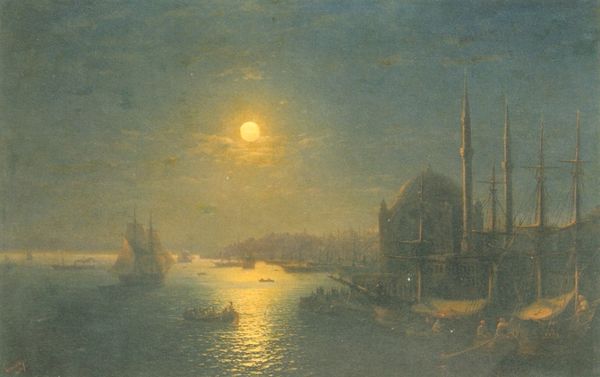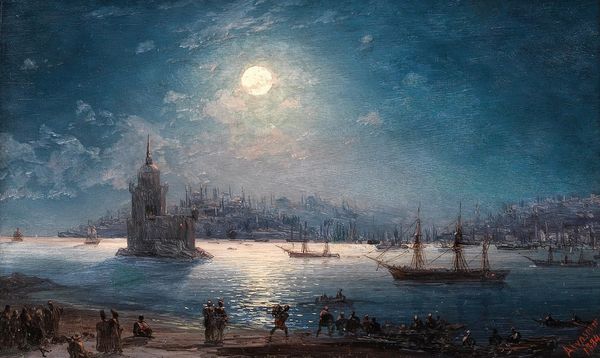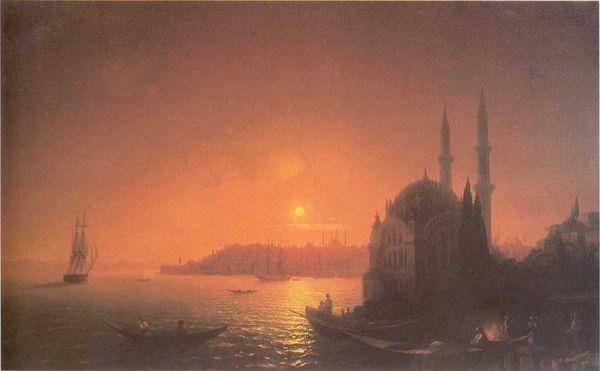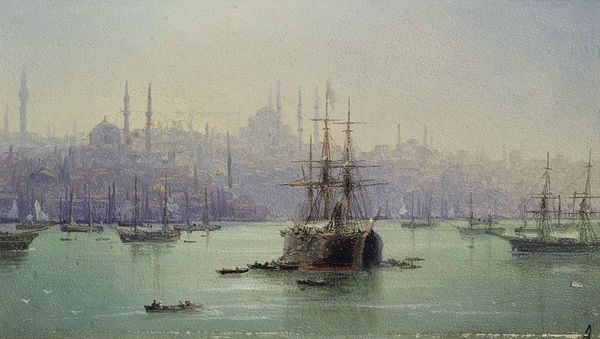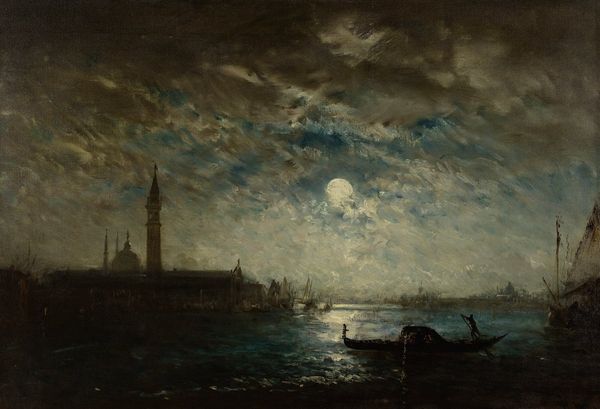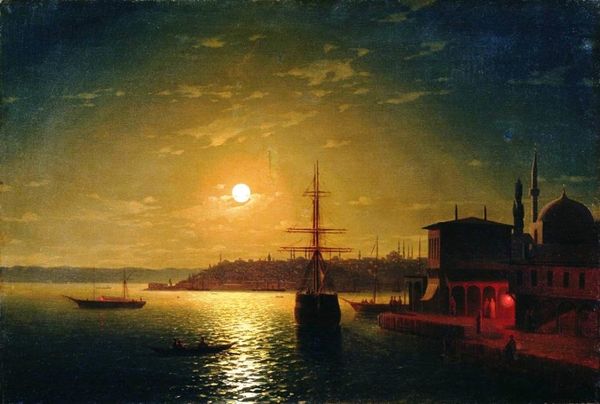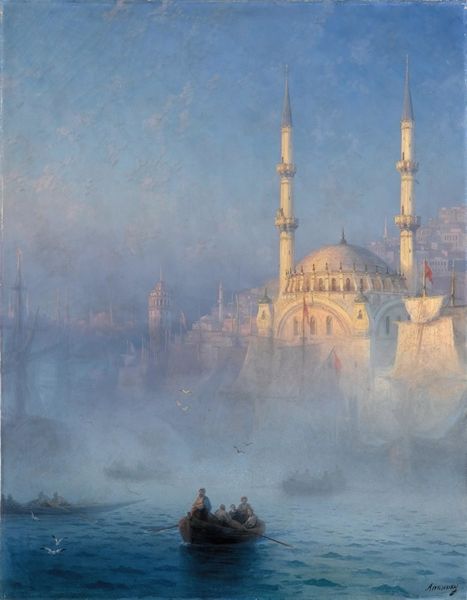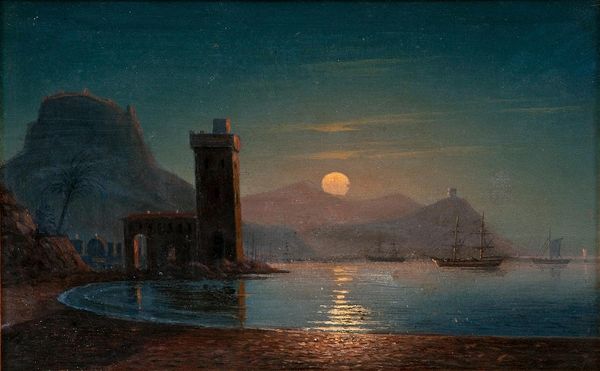
Copyright: Public domain
Curator: This is "Moonlit Night on the Bosphorus," an 1894 oil painting by Ivan Konstantinovich Aivazovsky, currently held in the Tretyakov Gallery in Moscow. Editor: Well, hello drama! All darks and shimmers, like a stage set waiting for a forbidden romance to play out. You can almost smell the damp wood and hear hushed whispers. Curator: The Romanticist aesthetic is very strong, isn't it? Aivazovsky uses the dramatic chiaroscuro to heighten the emotional impact, doesn't he? And look at the strategic placement of light to direct the viewer's gaze: first the moon, then the water, and then to the figures along the shore. Editor: It’s masterful manipulation, I think! See how that strong horizontal line divides the sky from the sea? Yet the soft reflection of the moon knits them together—it's almost dreamlike. The Orientalist style adds an interesting flavor; an air of exoticism that blends into the mood. Curator: Absolutely, and consider how he represents the city. While recognizably Istanbul, it feels abstracted and symbolic, distilled into this one glowing building which may actually be the Yeni Valide Mosque and these shadowy figures which adds another layer. It’s as much about feeling as it is about seeing. Editor: Yes! But is he romanticizing too much? Are these just clichés, tropes for his era? The dark mood feels forced at times, or maybe I'm just a cynic in the age of anxiety. It is a stunning example of what light and darkness can evoke but I’m left with that lingering doubt. Curator: Perhaps that's part of its charm. It’s a portal into the past, reminding us of what moved people, and maybe ourselves, in less cynical times. Even with a hint of theatrics, it gets you thinking about bigger things – history, romance, and all that grand stuff. Editor: True enough! This old canvas still stirs the emotional pot, doesn't it?
Comments
No comments
Be the first to comment and join the conversation on the ultimate creative platform.
